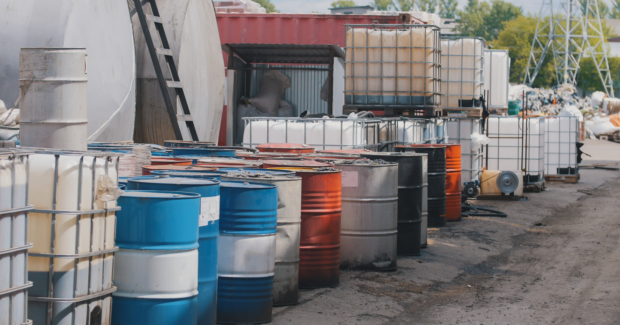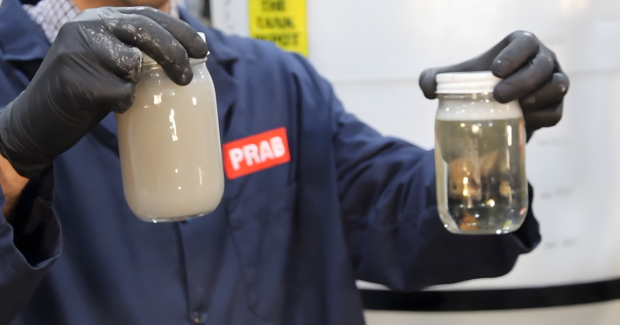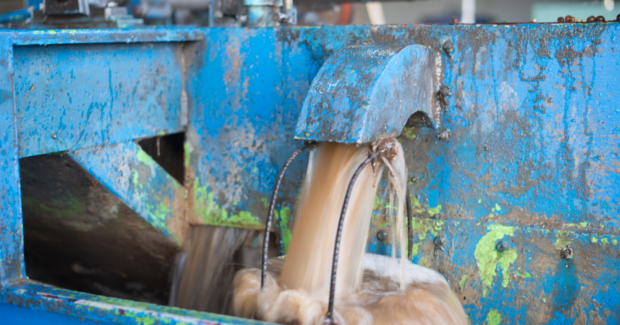Improved Waste Stream Processing Can Help Your Operation Avoid Environmental Compliance Penalties
Metalworking operations can expect to face stricter environmental regulations in the coming years. Is your waste stream management compliant and sustainable?
Posted: July 22, 2023
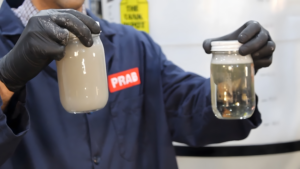
Under the Federal Civil Penalties Inflation Adjustment Act Improvements Act of 2015, agencies including the U.S. Environmental Protection Agency (EPA), as well as agencies within the Department of Labor, must annually adjust their penalties based on the previous year’s rate of inflation. As a result, fines for civil penalties rose sharply in January 2023, up 7.7% from the previous year.
The amount of each civil penalty depends on U.S. code citations. Among them:
- The Clean Water Act has nine U.S. code citations, with penalties ranging from $2,232 to $223,229.
- The Resource Conservation and Recovery Act (RCRA) includes nine code citations, with penalties from $17,570 to $117,468.
- The Clean Air Act includes six code citations, with penalties ranging from $11,162 to $446,456.
It’s worth noting that penalties are applicable for violations that occurred after Nov. 2, 2015, when the act was passed, and when penalties were assessed on or after Jan. 6, 2023. But even prior to the 7.7% increase, manufacturing companies that were fined for EPA violations paid a steep price.
In 2022, an Indianapolis oil processing facility incurred a $310,000 settlement for violating the Clean Air Act. An Iowa hydraulics manufacturer was fined $26,534 due to hazardous waste violations under RCRA, and a Massachusetts manufacturer of power systems and controls was fined more than $120,000 for failing to comply with requirements necessary for operating as a “large quantity generator” of hazardous waste. In 2021, an Iowa manufacturer of truck equipment was fined $50,208 also stemming from “large quantity generator” RCRA violations.
In addition to the financial penalties, each of these companies received press for their alleged violations.
Moving forward, avoiding fines will be more critical to a company’s financial well-being and public image. In metalworking, improving two aspects of waste stream management — wastewater and spent cutting fluids — can help companies meet environmental compliance requirements, but also lower expenses.
How to Lower Wastewater Liabilities
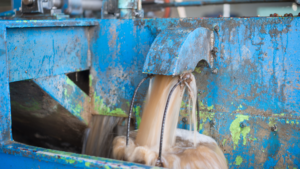
Reducing, treating, and reusing wastewater and process water onsite helps companies meet federal pre-treatment standards and local discharge regulations.
Several processes can be used — many in combination — to lower financial risk, meet zero liquid discharge goals, and reduce manufacturing disposal costs. Here is a look at five of the most utilized wastewater treatment processes:
- Reverse osmosis: Presses feed water through a semipermeable membrane to make the permeate (the water that passes through the membrane) clean enough to reuse in the application. It is often used as a secondary treatment after ultrafiltration to remove dissolved salts, as well as colloidal and suspended matter. The concentrate (the dissolved salts rejected by the membrane) can be either sent to the POTW or processed more on-site to further reduce the wastewater volume.
- Ultrafiltration: Often used to achieve zero liquid discharge goals, ultrafiltration separates organics, emulsified oils, and suspended solids from wastewater. It produces a consistent and quality effluent, enabling the treated water to be reused or disposed of.
- Vacuum filtration: With the ability to remove fine particulate and collect solids and sludge, this process is used to eliminate high levels of contamination.
- Tramp oil separation: Removes free-floating and mechanically dispersed tramp oils, bacteria, slime, and inverted emulsions that are present in machining and grinding fluids, wash waters, cooling water, and wastewater to reduce hazardous waste volumes.
- Vacuum evaporation: Significantly reduces process water and wastewater volumes through evaporation. The distillate can be reused in the process. The concentrate, which can be crystallized, can be hauled away.
How to Lower Cutting Fluid Liabilities
- Wringing chips: Uses centrifugal force to spin metal chips to drain cutting fluids for reclamation. Recovering spent cutting fluids for recycling and reuse lowers the environmental risks associated with storing and transporting metal scrap coated in cutting fluid. Wringing chips also reduces coolant purchases and lowers haul-away and disposal costs.
- Centralized coolant recycling: Running spent cutting fluids through a centralized coolant recycling system removes tramp oils and suspended solids from contaminated fluids while controlling bacteria. This process significantly extends coolant life, enabling cutting fluids to be reused. Some systems can also adjust fluid concentration. Because waste fluids are reduced, hazardous waste storage, haul-away liabilities and disposal costs will all be lower.
Metalworking operations can expect to face stricter environmental regulations in the coming years. Seeking the assistance of a total solutions provider of process water, wastewater, and fluid management equipment can help manufacturing companies benefit from waste stream management improvements that are both environmentally compliant and sustainable.
Subscribe to learn the latest in manufacturing.





